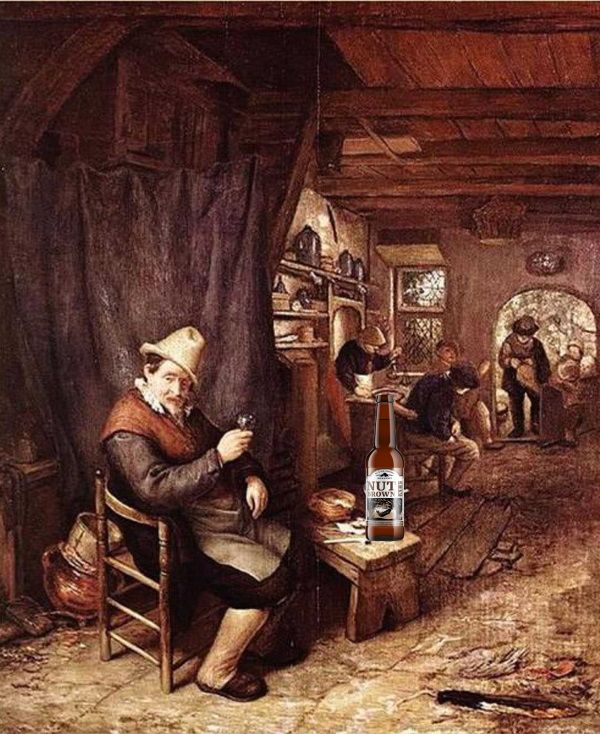Regardless of my motivation, those ales were tasty and I
felt it was really neat to be drinking beers that were direct descendants of brews
of the Middle Ages. I mean, John Barleycorn had his nut brown bowl and that
song was hundreds of years old, right? This was a beer with heritage! Wasn't
John Locke sipping on a nut brown ale at his local tavern while arguing with
fellow patrons about the right and true relationship between the governed and
their government? Did Jeremy Bentham not have a pint of the stuff before him as
he lectured John Stuart Mill on the utility of felicific calculus? Was nut
brown ale not one of the primary fuels of the Enlightenment?!
Well, no it wasn't. According to classic punk afficionado
and beer historian Ron Pattinson, nut brown ale is an invention of the early 20th century.
Ooops!
But, while the beer style is relatively new, the term
"nut brown ale" used for marketing purposes dates back further. I can
try to console myself at having my illusions shattered by imagining Arthur
Conan Doyle with a pint of it as he brought Sherlock Holmes to life. Or perhaps
that it was favored by Emmeline Pankhurst as she argued in favor of women's
suffrage, pointing out that the esteemed philosopher Jeremy Bentham had promoted
the idea 100+ years before so what was taking so long?
Not too long ago I wrote about Rhoades' Scholar Stout by
South Shore Brewery. I surely noted therein that the brewery, located on the
shores of Lake Superior, regularly ships two beers down here to Madison. Now
the identity of the second brew can finally be revealed! Wait. Never mind. I
mentioned in that very post that their Nut Brown Ale was also found here in
these southern parts.
So what is a nut brown ale?
I am unsure, to put it mildly. English beer styles are
largely a mystery to me. One day I'll read some of Martyn Cornell's books but,
until then, inexhaustive internet searches will have to suffice.
From what I gather, "nut brown ale" at least began
as a description of color before moving on to having something to do with flavor.
No doubt American and English variations differ in subtle and, perhaps, not to
subtle ways. There also appears to be regional variation in England with
northern and southern varieties being the most prominent. The more I read about
it, the more complicated it gets. All of these brown ales and some of them aren't
even brown. A bit more sweetness here, more dryness there. It's a really Daedalian
maze of shades of brown, alcohol content, locale, et al.
Let's just investigate South Shore's take on the style,
shall we?
Just a hint of fizz to be had on a sip. Some roasted grain and chocolate were also there. Either dark milk chocolate or milky dark chocolate. Also, some plum, although this was not a particularly sweet beer. Finally, there was some nuttiness. Think of a nice bread that was made with flax and sunflower seeds - a bit like that. I found that the roasted grain flavor lingered on the finish as a mild herbal hoppiness kicked in lending a touch of bitterness and a very mild dryness.
This is a very tasty beer. Nutty and mild, with a nice smoothness. (Look ma! No fizz!) I enjoyed the restrained sweetness and medium-light body which helped it go down easily. The nutty flavor and the herbal hoppiness are fairly uncommon in today's craft beer world and so they were an extra tasty treat for me. More of those please! It's 5.8% A.B.V. which seems a bit more potent than its English cousins.
Finally I want to say good on South Shore for an IPA-light set of offerings and instead giving us Madisonians a fine nut brown and a tasty stout instead.
Junk food pairing: Complement the nutty flavors of Nut Brown Ale with a bag of parmesan & garlic potato chips. Can't go wrong with Old Dutch, I say!


No comments:
Post a Comment